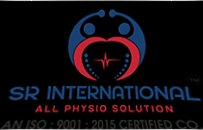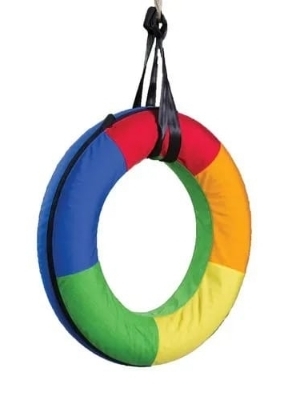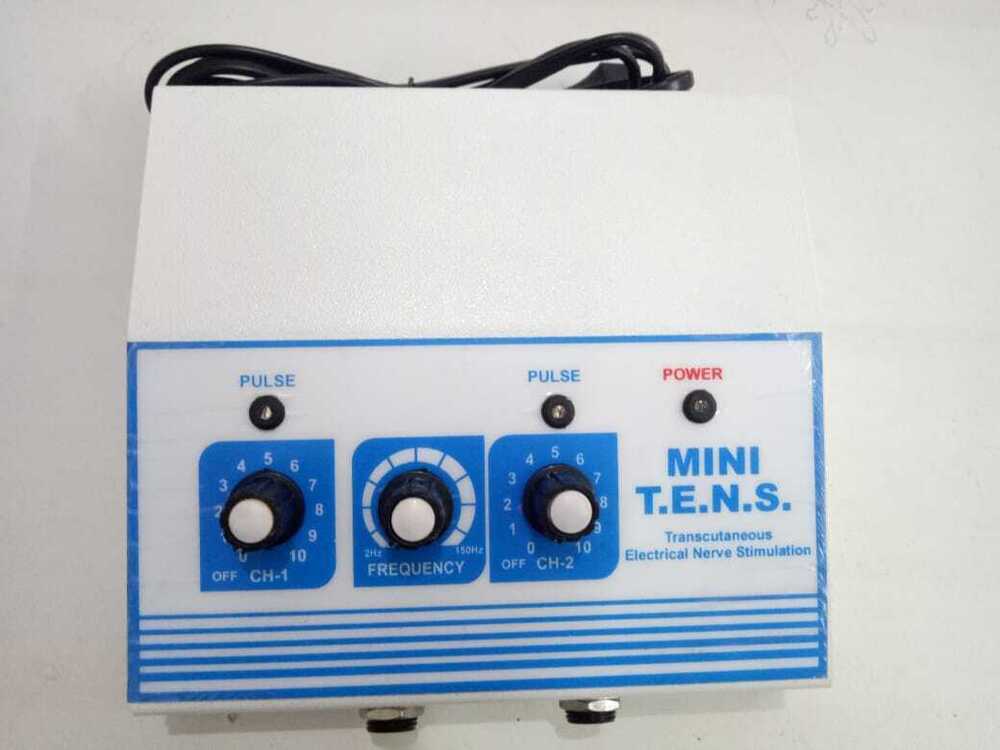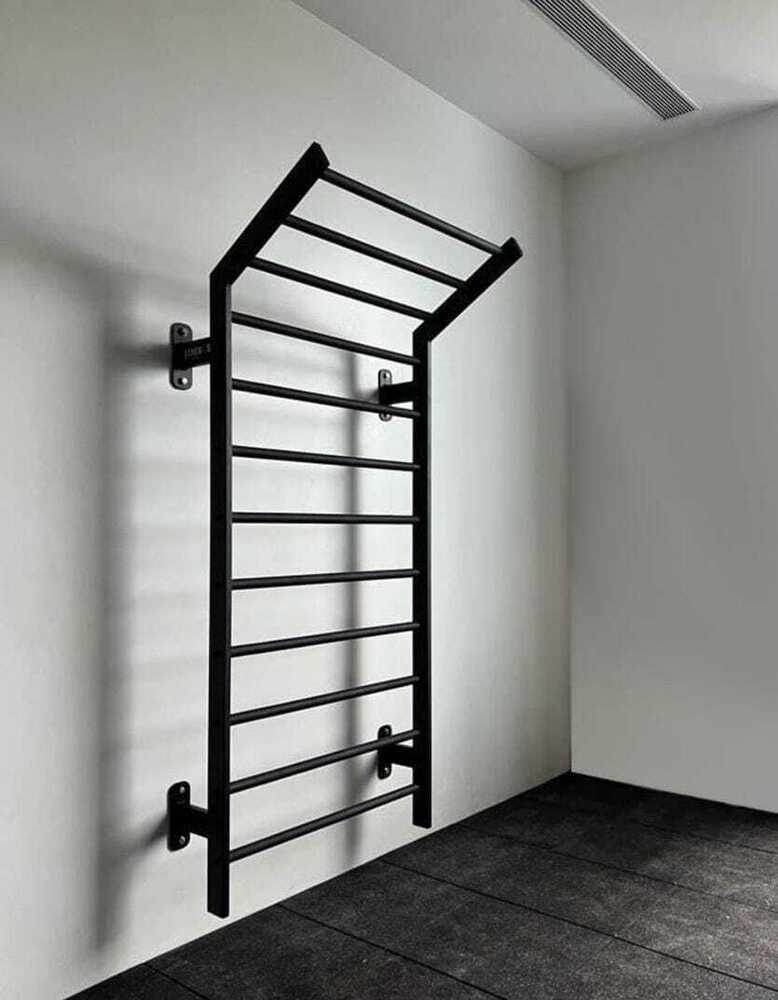Metallic Exercise Corner Stair Case Therapy
Metallic Exercise Corner Stair Case Therapy Specification
- Warranty
- 1 year warranty
- Function
- The product shown is a rehabilitation or physiotherapy staircase. Its function is to assist with physical therapy, strength training, and mobility improvement. Key functions and uses include:Rehabilitation: It is a tool for patients recovering from surgery, stroke, or injury to practice safe stair climbing and descent in a controlled environment. Mobility Training: The staircase helps users regain balance, coordination, and confidence in walking. It is used for ambulation therapy and mobility training. Space-Saving Design: The corner-type design allows it to be used in a department or clinic to save valuable space. Therapeutic Exercises: It is a versatile tool for a range of sensory motor activities.
- Color
- The product in the image is primarily blue and silver/white.Blue: The steps, platform, and the padding on the handrails are blue. Silver/White: The metal frame and the main structure of the handrails are a light, metallic color, which can be described as silver or white.
- Set Contains
- The product shown is a Corner Rehabilitation Staircase, also known as a Metallic Exercise Corner Staircase. It is a piece of physiotherapy equipment designed for ambulation and mobility training. The product set contains the following components: Frame: A supporting frame typically made of tubular metal (like mild steel or square tubular pipe) with a powder-coated finish.Stair Sections: Two separate sections of stairs, built to be assembled at a right angle to fit into a corner. The steps are often made of wood or commercial board with non-slip matting.Platform: A central platform that connects the two stair sections.Handrails: Chrome-plated or mild steel handrails on both sides of each stair section, which are often adjustable in height.
- Material
- The product shown is an exercise staircase, and it is typically constructed from a combination of materials for durability and safety.Frame and Handrails: The supporting frame and handrails are generally made from steel or other metals. These components may be constructed from tubular steel or mild steel (MS) and can have a powder-coated or chrome-plated finish. Steps: The steps are often made from a commercial board or other sturdy material and are covered with a non-slip mat or surface to ensure user safety during rehabilitation exercises.
- Technology
- Wall mounting metallic Exercise Corner Stair Case Therapy
- Operating Type
- manual
- Operation Mode
- manual
- Shape
- L-shape
- Application
- The product shown is a rehabilitation staircase, also known as a corner exercise staircase, used for physical therapy and mobility training. The applications for this type of equipment include:Physical Therapy: It is an aid for physical therapists and caregivers to help patients with recovery and mobility improvement. Gait and Balance Training: The staircase and ramp combination is designed for gait training, balance recovery, and strengthening lower limbs. Rehabilitation: It is suitable for patients recovering from surgery, stroke, or injury to regain balance, coordination, and confidence in walking. Targeted Programs: The equipment is used in neuro, ortho, and geriatric physiotherapy programs.
- Wall Mounted
- The product shown in the image is an exercise staircase, also known as a therapeutic or rehabilitation staircase. The product is a free-standing unit and is not wall-mounted.
- Feature
- It is designed for safety and stability, featuring a non-slip surface on the steps and durable construction.
- Attributes
- Based on the image and similar products, the attributes of this type of exercise staircase are:Material: The frame is typically constructed from tubular steel with a power-coated finish. The steps are often made from a commercial board with a non-slip matting. Design: It is a corner-type staircase built in two sections to fit into a corner, with steps of varying heights. Handrails: The handrails are made of steel tubing, often chrome-plated, and are adjustable in height to accommodate different users. Purpose: The product is a therapeutic tool used for ambulation therapy, mobility training, and rehabilitation exercises to improve balance, strength, and coordination.
- Portable
- Based on product specifications from multiple sources, there is conflicting information regarding the portability of this type of exercise staircase.One source describes a similar product as "Compact and lightweight, the device is easy to transport, making it ideal for use in clinics, hospitals, and home care". However, another source explicitly states "No" in its product specifications for portability.
- Condition
- Best
- Adhesive Type
- The specific type of adhesive used for the product in the image is not explicitly mentioned in the available information. However, for similar products, the non-slip mats on the stairs are often attached using self-adhesive materials.
- Storage Instructions
- Based on the available information, specific storage instructions for this type of rehabilitation staircase are not available. The product is a large piece of physical therapy equipment, and storage would likely involve finding a designated space within a clinic or facility.
- Dimension (L*W*H)
- 120 x 80 x 120 cm Centimeter (cm)
- Suitable For Use
- The product in the image is a corner exercise staircase used for physiotherapy and rehabilitation. This type of equipment is suitable for use in:Gait Training and Mobility: It helps patients practice walking and climbing stairs in a controlled environment. Rehabilitation: It is used for post-surgery recovery, neurological rehabilitation, and orthopedic therapy. Muscle Strengthening: The varying step heights help to strengthen the muscles in the lower limbs. Balance and Coordination: It aids in improving balance and coordination. Therapy Centers: The corner design is space-saving and ideal for use in physiotherapy clinics and hospitals.
- Use
- The product shown is a rehabilitation staircase or exercise staircase, which is a piece of physiotherapy equipment.It is used for:Gait training and mobility improvement: It helps patients regain their ability to walk and climb stairs safely. Physical therapy and rehabilitation: It is an aid for people recovering from surgery, stroke, or injury to strengthen their lower limbs and improve coordination and balance.
- Lighting Type
- The product shown in the image, an exercise staircase for physical therapy, does not have any integrated lighting. The lighting visible in the photograph is ambient lighting used to illuminate the product. Product Description: The item is a corner-type exercise staircase, often used for rehabilitation and gait training.Lighting Context: While the product itself lacks built-in lights, it is typically used in clinical or home settings where various types of lighting, such as LED step lights, may be installed in the surrounding environment to improve visibility and safety.
- Size
- 60 x 60 cm
- Recyclable
- Yes
- Recommended For
- Joints, Cervical, Muscles
- Treatment
- The product shown is a physical therapy staircase used for rehabilitation and exercise. This therapeutic tool is designed for the following treatments:Physical Therapy and Rehabilitation: It is used in physiotherapy clinics and rehabilitation centers to help patients regain mobility, balance, and coordination. Gait Training: The staircase helps patients practice stair climbing and walking, which is essential for those recovering from surgery, strokes, or injuries. Lower Limb Strengthening: The graduated steps allow for progressive exercises to strengthen the muscles in the legs.
- Pressure Range
- The product shown is an exercise staircase used for physical therapy and rehabilitation. While the term "pressure range" is not a standard specification for this type of equipment, the relevant metric is its weight capacity.
- Usage
- The product shown is a rehabilitation or exercise staircase, also known as a physio or therapy staircase. It is used in physical therapy and rehabilitation centers for the following purposes:Gait Training and Mobility: It helps patients practice walking and climbing stairs in a controlled environment. Balance and Coordination: It aids in improving balance and coordination, which is crucial for patients recovering from injuries, surgery, or strokes. Lower Limb Strengthening: The stairs are used to strengthen muscles in the legs and feet. Rehabilitation: It is a key tool for post-surgery rehabilitation and for geriatric physiotherapy programs.
- Age Group
- Children, Adults, Women, Elders
- Display
- NIL
- Power Source
- Manual
- Weight
- 50 kg Kilograms (kg)
Metallic Exercise Corner Stair Case Therapy Trade Information
- Minimum Order Quantity
- 1 Piece
- FOB Port
- By transport and by air
- Payment Terms
- Cash Against Delivery (CAD), Cash on Delivery (COD), Cash Advance (CA), Cash in Advance (CID), Cheque
- Supply Ability
- 1 Piece Per Week
- Delivery Time
- 1 Week
- Sample Policy
- Sample costs shipping and taxes has to be paid by the buyer
- Main Export Market(s)
- Asia, Australia, Central America, North America, South America, Western Europe, Middle East
- Main Domestic Market
- All India
About Metallic Exercise Corner Stair Case Therapy
The product shown is a Corner Rehabilitation Staircase, also known as an Exercise Staircase. It is a therapeutic apparatus used for physical rehabilitation and mobility training. Product Description Design: The staircase is built in two sections at a right angle, designed to fit into a corner to optimize space. Construction: The frame is typically made of a metallic, tubular material, such as mild steel, with a powder-coated finish. The steps and platform are often made of a commercial board covered with a non-slip matting for safety. Features: It includes adjustable handrails made of steel tubing to accommodate users of different heights. The steps vary in number and height, with one side often having more steps than the other to provide different levels of difficulty.Designed for Effective Rehabilitation
The corner exercise staircase is built for optimizing therapy sessions. Its multi-step structure allows for progressive training, strengthening leg muscles, and enhancing balance. Suitable for patients undergoing post-surgical recovery, neurological, or orthopedic therapy, it gives therapists a safe environment to guide mobility improvement.
Versatile and Space-Saving
With an L-shaped construction, this staircase is perfect for clinics and hospital settings where maximizing floor space matters. The design accommodates a wide range of users, including children, adults, and seniors, making it a flexible solution for diverse rehabilitation needs.
Safety and Durability Features
Key safety elements include non-slip step surfaces and solid steel handrails, which can be adjusted for personal comfort. The robust metallic frame is powder-coated for durability and easy cleaning, ensuring long-term reliability even with frequent use in physiotherapy facilities.
FAQs of Metallic Exercise Corner Stair Case Therapy:
Q: How is the Metallic Exercise Corner Stair Case Therapy used in rehabilitation programs?
A: Patients practice walking, ascending, and descending steps under the supervision of a therapist. This helps improve strength, balance, and coordination, specifically after surgery, injury, or neurological conditions.Q: What are the main benefits of using a corner staircase for physical therapy?
A: Benefits include enhanced gait training, improved lower limb strength, increased balance and coordination, and a controlled setting for progressive mobility exercises.Q: Where should the rehabilitation staircase be installed for optimal use?
A: It is best placed in physiotherapy clinics, hospitals, or rehabilitation centers with adequate space. Its corner-friendly design helps conserve valuable room while remaining accessible for staff and patients.Q: Is the stair case suitable for all age groups and conditions?
A: Yes, the staircase can be used by children, adults, women, and elders for joint, muscle, and cervical therapy. Its adjustable handrails accommodate a range of physical abilities and heights.Q: What process is followed during a typical therapy session on the staircase?
A: Patients are guided by a therapist to step up and down the stairs, focusing on balance, muscle engagement, and safe movement patterns. Sessions are tailored to individual recovery goals and abilities.Q: How should the metallic exercise staircase be maintained and stored?
A: While specific storage instructions are not provided, the equipment should be kept in a designated clinic or therapy area. Cleaning the non-slip surfaces and inspecting handrails regularly will ensure user safety and prolong equipment life.Q: Does the stair case require any power source or special installation?
A: No. The staircase operates manually and does not require electrical power for use. It is a freestanding piece and does not need to be wall-mounted, though it should be positioned securely within the facility.

Price:
- 50
- 100
- 200
- 250
- 500
- 1000+
More Products in Therapy Equipment Category
Tube Swing
Price 7500 INR / Piece
Minimum Order Quantity : 1 Piece
Material : The cover material for the tube swing is typically polyamide. The swing features a heavyduty, zipped cover. The cover material is specified as 100% polyamide for a similar "Rainbow" tube swing.
Power Source : Manual
Display : NIL
Warranty : 1 year warranty
Disk Swing
Price 6000 INR / Piece
Minimum Order Quantity : 1 Piece
Material : The disc swing in the image is designed for sensory integration therapy and balance training. Swings of this nature are generally made from a variety of materials depending on the manufacturer and intended use. Common materials include:Foam and Fabric/Vinyl: The product pictured appears to be foamcovered, likely with a durable vinyl or fabric upholstery. Plastics: Many disc swings are made from premium thick plastic or polypropylene (PP). Wood: Some highend options use materials like birch wood. Rope/Hardware: Ropes are often made of polyester or PE rope, and hardware is typically metal.
Power Source : Manual
Display : NIL
Warranty : 1 year warranty
MINI TENS
Price 1800 INR / Number
Minimum Order Quantity : 50
Material : METAL
Power Source : Manual
Display : Other
Warranty : ONE YEAR WARRANTY
Wall Ladder Metal
Price 11000 INR / Number
Minimum Order Quantity : 1 Number
Material : METAL
Warranty : ONE YEAR WARRANTY








 Send Inquiry
Send Inquiry Send SMS
Send SMS